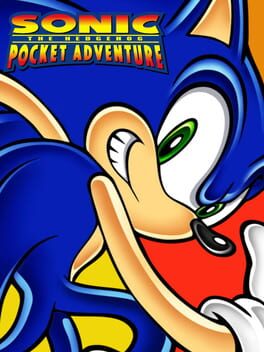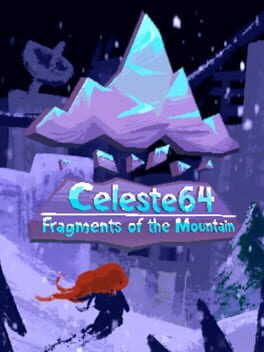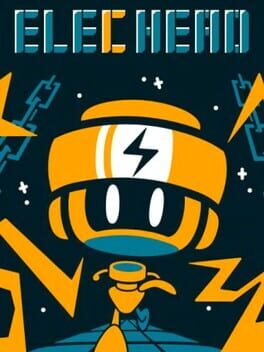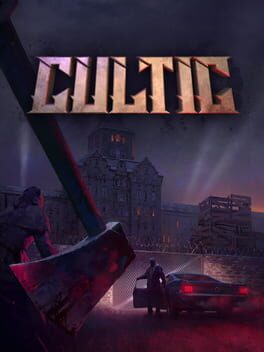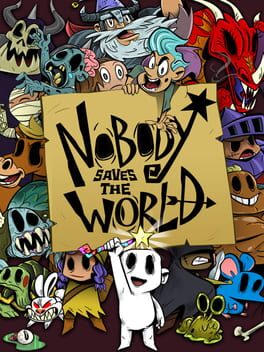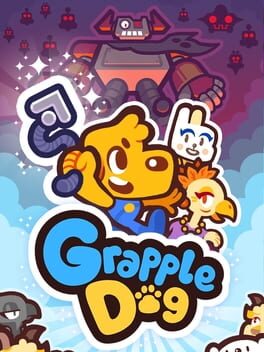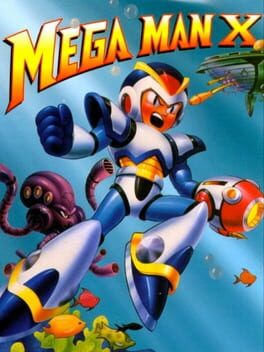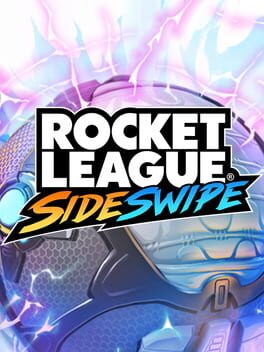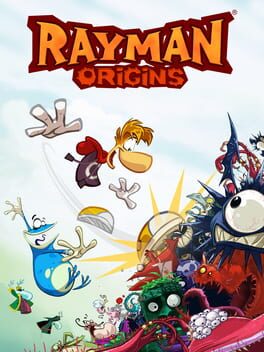lithiumproject
2023
Easily going to top a bunch of 'best surprise' lists come the end of the year, both for its launch and the fact it's a Tango Gameworks game.
The first few hours are a blast, with a fusion of PS2/Dreamcast era cel-shaded visuals and a soundtrack that would also fit around that time. However, around the middle section, it treads treading into ‘cult of the lamb’ territory, where you feel it won't stick the landing. There are a couple of chapters where HFR runs out of ideas and escalates the difficulty by throwing more enemies at you. Unfortunately, the more enemies on the screen, the quicker the game falls into the trappings of a standard hack n slash-style brawler; when this happens, the enemy design simply isn't interesting or varied enough to compensate for this.
But oh man this game nails the landing, and the last few chapters ties everything together, gets you actually to care about these characters and used some inspired needle drops (I say inspired, it just went through the most played songs on my iPhone from 2011) to end Hi-Fi Rush on an undeniable high.
Hey now, you’re a rock star.
The first few hours are a blast, with a fusion of PS2/Dreamcast era cel-shaded visuals and a soundtrack that would also fit around that time. However, around the middle section, it treads treading into ‘cult of the lamb’ territory, where you feel it won't stick the landing. There are a couple of chapters where HFR runs out of ideas and escalates the difficulty by throwing more enemies at you. Unfortunately, the more enemies on the screen, the quicker the game falls into the trappings of a standard hack n slash-style brawler; when this happens, the enemy design simply isn't interesting or varied enough to compensate for this.
But oh man this game nails the landing, and the last few chapters ties everything together, gets you actually to care about these characters and used some inspired needle drops (I say inspired, it just went through the most played songs on my iPhone from 2011) to end Hi-Fi Rush on an undeniable high.
Hey now, you’re a rock star.
It's a competent port of the original Sonic the Hedgehog, though it's a little odd having the Sonic 3 & Knuckles OST slapped on top of Sonic 2 levels.
The screen space gets a bit troublesome towards the end, with the sky fortress level, in particular, causing a number of deaths and increased frustration. Overall though it looks decent and reminds me of the original Master System / Game Gear ports.
The screen space gets a bit troublesome towards the end, with the sky fortress level, in particular, causing a number of deaths and increased frustration. Overall though it looks decent and reminds me of the original Master System / Game Gear ports.
2022
It's outrageous the level of confidence, swagger and presentation this game has for a team of two on what is (I think) their debut title.
The PS1 survival horror mechanics are blunt to see, but the fusion of Kojima-esque direction, 90s anime and cold war-era Germany iconography make Signalis one of the most memorable games I've played in some time. It also doesn't go for cheap thrills and scares (thankfully), instead, layering the tension with its lo-fi aesthetic and mechanical choices.
It's not perfect, with the pacing towards the end faltering ever so slightly, and some of the puzzles feeling just a bit too obtuse in terms of their logic.
The balancing act of being a loveletter to a specific era, encompassing a number of throwbacks and elements without ever feeling like the game relies on them, is executed about as well as anyone could possibly attempt. Essential.
The PS1 survival horror mechanics are blunt to see, but the fusion of Kojima-esque direction, 90s anime and cold war-era Germany iconography make Signalis one of the most memorable games I've played in some time. It also doesn't go for cheap thrills and scares (thankfully), instead, layering the tension with its lo-fi aesthetic and mechanical choices.
It's not perfect, with the pacing towards the end faltering ever so slightly, and some of the puzzles feeling just a bit too obtuse in terms of their logic.
The balancing act of being a loveletter to a specific era, encompassing a number of throwbacks and elements without ever feeling like the game relies on them, is executed about as well as anyone could possibly attempt. Essential.
1998
There are times with MGS where I get it: the tone, the atmosphere, that soundtrack, the early use of (very decent) voice acting, the backdrop of the Cold War being used to frame a mostly compelling narrative.
But Kojima just cannot help himself; every cutscene feels like it goes on 5 minutes longer than necessary; every bit of dialogue has to overexplain some aspect of the story or character motivations that ends up leaving you more confused; and every effective plot twist smashes head first into another twist that adds nothing to the story. Oh, and every boss goes on a 15-minute monologue while dying? Get in the bin.
MGS is a dope as fuck game, and I totally see how a 12-year-old played this and OOT in the same year and was hooked on games for the rest of their life. But one of these games still plays and feels as revolutionary now as it did then, and it doesn't involve the thespian Liquid Snake.
But Kojima just cannot help himself; every cutscene feels like it goes on 5 minutes longer than necessary; every bit of dialogue has to overexplain some aspect of the story or character motivations that ends up leaving you more confused; and every effective plot twist smashes head first into another twist that adds nothing to the story. Oh, and every boss goes on a 15-minute monologue while dying? Get in the bin.
MGS is a dope as fuck game, and I totally see how a 12-year-old played this and OOT in the same year and was hooked on games for the rest of their life. But one of these games still plays and feels as revolutionary now as it did then, and it doesn't involve the thespian Liquid Snake.
2022
Chasing the dragon that is God of War’s (2018) success was always going to provide a challenge. You’d expect a sequel of this size and budget to minimize taking risks and focus on expanding the scale and narrative. However, 2018 is a tight-knit, focused experience on gameplay with a solid narrative to complement it. Ragnarok, on the other hand, leans so heavily on a story that is compelling enough but not one worth dragging through a plodding 30+ campaign.
The pacing on this thing is glacial at points, with the warts of AAA design hovering all over this thing; characters desperate to spew exposition in every moment of space, puzzles that never evolve past “throw the object at the environment,” an RPG-lite skill tree that deprives you of any basic strategy and linear environments that attempt to give you a false perception you can go in any direction other than straight.
There is no doubting the technical finesse of Ragnarok and Santa Monica Studios. They are truly industry-leading in creating that AAA blockbuster experience with their motion capture tech, strong voice-acting performances, incredible visuals, and spectacular set pieces. The game retains some of its predecessor's magic with several memorable boss fights that fit up with some of the best in the series, but so much of this game feels like you’re on the Disney World “It’s a Small World" ride. You have no control over what happens, and it’s the slowest fucking thing in the universe.
The pacing on this thing is glacial at points, with the warts of AAA design hovering all over this thing; characters desperate to spew exposition in every moment of space, puzzles that never evolve past “throw the object at the environment,” an RPG-lite skill tree that deprives you of any basic strategy and linear environments that attempt to give you a false perception you can go in any direction other than straight.
There is no doubting the technical finesse of Ragnarok and Santa Monica Studios. They are truly industry-leading in creating that AAA blockbuster experience with their motion capture tech, strong voice-acting performances, incredible visuals, and spectacular set pieces. The game retains some of its predecessor's magic with several memorable boss fights that fit up with some of the best in the series, but so much of this game feels like you’re on the Disney World “It’s a Small World" ride. You have no control over what happens, and it’s the slowest fucking thing in the universe.
1996
A trip down memory lane to a 2.5D platformer I played a ton of as a child.
Coming back to it in my 30s and with a keener eye for the details, a number of the game's flaws become a lot more apparent, with the camera being as much an enemy to overcome as anything else.
Nikki's double jump seemingly works on a system of "Nah, don't feel like it this time" that would see me careen to my death multiple times, and fuck me the last third of this game is up there with some of the tougher platformers ever.
With that said, plenty of creativity in level design and music with multiple segments over the course of a single level. While the models and 3D assets look as you'd expect for a game from 1996, the pre-backgrounds are pretty impressive and underrated.
Coming back to it in my 30s and with a keener eye for the details, a number of the game's flaws become a lot more apparent, with the camera being as much an enemy to overcome as anything else.
Nikki's double jump seemingly works on a system of "Nah, don't feel like it this time" that would see me careen to my death multiple times, and fuck me the last third of this game is up there with some of the tougher platformers ever.
With that said, plenty of creativity in level design and music with multiple segments over the course of a single level. While the models and 3D assets look as you'd expect for a game from 1996, the pre-backgrounds are pretty impressive and underrated.
A remarkable feat for being developed over such a short period of time. Entirely retains the flavour and tone of Celeste while weaving in all those trappins of a Nintendo 64 game.
However, I will say Celeste doesn't fully translate with success from 2D to 3D in the same way a Mario does, as some of the platforming in conjunction with the camera becomes too much of a hassle. But also, the fucking thing was made in two weeks and is free.
However, I will say Celeste doesn't fully translate with success from 2D to 3D in the same way a Mario does, as some of the platforming in conjunction with the camera becomes too much of a hassle. But also, the fucking thing was made in two weeks and is free.
2021
2022
The variety of classes available are creative and offer a number of challenges across the game's running time, and while some are better than others, the option (And at times demands of the quests) to use abilities on other classes means you'll find incentive to use them all.
There's a definite peak to NSTW, unfortunately, it's about 10 hours into a 20-hour game, and by that point, you have seen what NSTW has to offer. The lack of a compelling plot means beating the game is purely for the sake of being a completionist, as the final dungeons don't offer that much more.
It's a shame the points above drag the game down - especially as the writing in Guacamelee is highly enjoyable, which could have helped to keep me feeling actively engaged with NSTW's progression. However, I would say overall I enjoyed my time.
There's a definite peak to NSTW, unfortunately, it's about 10 hours into a 20-hour game, and by that point, you have seen what NSTW has to offer. The lack of a compelling plot means beating the game is purely for the sake of being a completionist, as the final dungeons don't offer that much more.
It's a shame the points above drag the game down - especially as the writing in Guacamelee is highly enjoyable, which could have helped to keep me feeling actively engaged with NSTW's progression. However, I would say overall I enjoyed my time.
2022
Live A Live is a unique experience and one that hits many highs throughout its campaign. Unfortunately, it has just enough issues to prevent it from being a truly special game.
With an array of 7 chapters, LAL drops you in at different moments in time with stories and tones that range from prehistoric crude low humour to space-bound horror. And for the most part, it’s able to strike these chords that make each section feel authentic for its time, without giving you too much in the way of tonal whiplash jumping from one chapter to the next. This is largely from the stunning presentation of a soaring and spectacular soundtrack and the gorgeous 2.5 HD graphics that Square Enix has found a winner with.
However, some of the chapters are just not that interesting. The aforementioned prehistoric chapter is fine enough, and changing the language to that of a simple caveman is a nice touch, but it’s mechanically passe. This is possibly the biggest issue with the game in general - Live A Live is at its least interesting when it plays out like a standard JRPG, which is the case for several chapters and towards the end of the game (the ‘Shakespeare in the Park language’ didn’t help either)
The chapters that were the most memorable, such as the Wild West and Distant Future had unique elements to them that made them so much more engaging, unlike running around aimlessly in Edo Japan or dealing with the irredeemably dull Akira in Near Future that had me reaching for another game.
The other aspect of the preferred chapters is the reduced amount of combat through those arcs. While the grid-based approach is unique, it fairs little in the way of the required strategy and became tedious before long. The highest compliment I can give is each battle theme whips.
…. So yeah, I had moments where I thought stopped playing, moments where I thought it was GOTY, and then laughed out loud at one of the multiple endings available. Live A Live is a solid game and a fucking ambitious one for 1994.
With an array of 7 chapters, LAL drops you in at different moments in time with stories and tones that range from prehistoric crude low humour to space-bound horror. And for the most part, it’s able to strike these chords that make each section feel authentic for its time, without giving you too much in the way of tonal whiplash jumping from one chapter to the next. This is largely from the stunning presentation of a soaring and spectacular soundtrack and the gorgeous 2.5 HD graphics that Square Enix has found a winner with.
However, some of the chapters are just not that interesting. The aforementioned prehistoric chapter is fine enough, and changing the language to that of a simple caveman is a nice touch, but it’s mechanically passe. This is possibly the biggest issue with the game in general - Live A Live is at its least interesting when it plays out like a standard JRPG, which is the case for several chapters and towards the end of the game (the ‘Shakespeare in the Park language’ didn’t help either)
The chapters that were the most memorable, such as the Wild West and Distant Future had unique elements to them that made them so much more engaging, unlike running around aimlessly in Edo Japan or dealing with the irredeemably dull Akira in Near Future that had me reaching for another game.
The other aspect of the preferred chapters is the reduced amount of combat through those arcs. While the grid-based approach is unique, it fairs little in the way of the required strategy and became tedious before long. The highest compliment I can give is each battle theme whips.
…. So yeah, I had moments where I thought stopped playing, moments where I thought it was GOTY, and then laughed out loud at one of the multiple endings available. Live A Live is a solid game and a fucking ambitious one for 1994.
2022
A throwback to the GBA with its presentation and soundtrack that sadly falls far short due to some incredibly frustrating physics. Trying to land where you want in this game is next to impossible and it feels like the heaviness or mass was accidentally tuned up to 10.
It's disappointing because there's a great game hidden in here with the grappling hook taken full advantage of, but I felt like I was wrestling with the controls for the entire 4/5 hour playthrough.
It's disappointing because there's a great game hidden in here with the grappling hook taken full advantage of, but I felt like I was wrestling with the controls for the entire 4/5 hour playthrough.
1993
Pretty much a perfect game and one of the first times a series would successfully reinvent itself, along with making the translation across from the 8-bit to the 16-bit era.
MM7 would release a year later and felt exactly like the 8-bit series but on SNES, and only serves to highlight how well they nailed MMX.
MM7 would release a year later and felt exactly like the 8-bit series but on SNES, and only serves to highlight how well they nailed MMX.
2011

